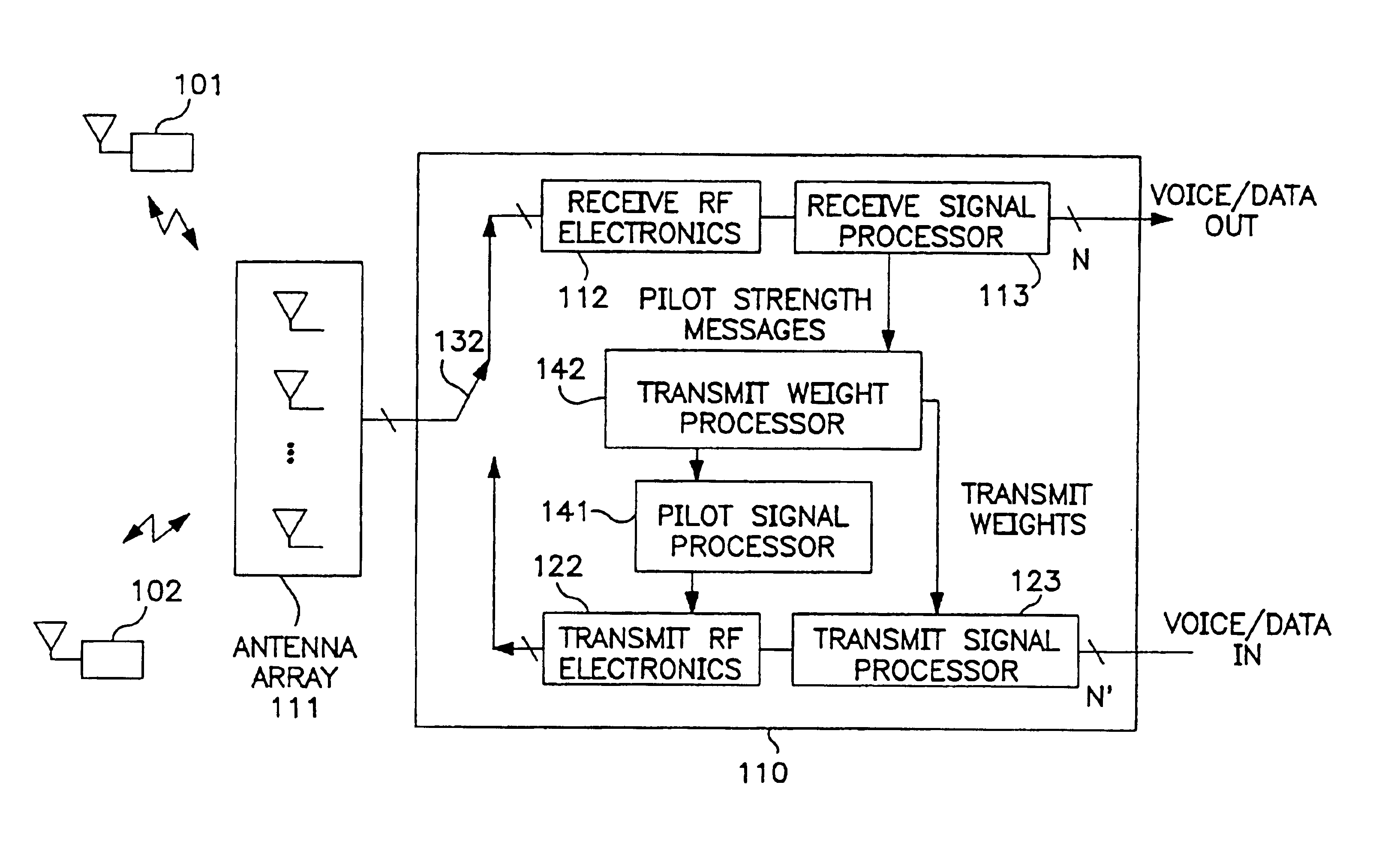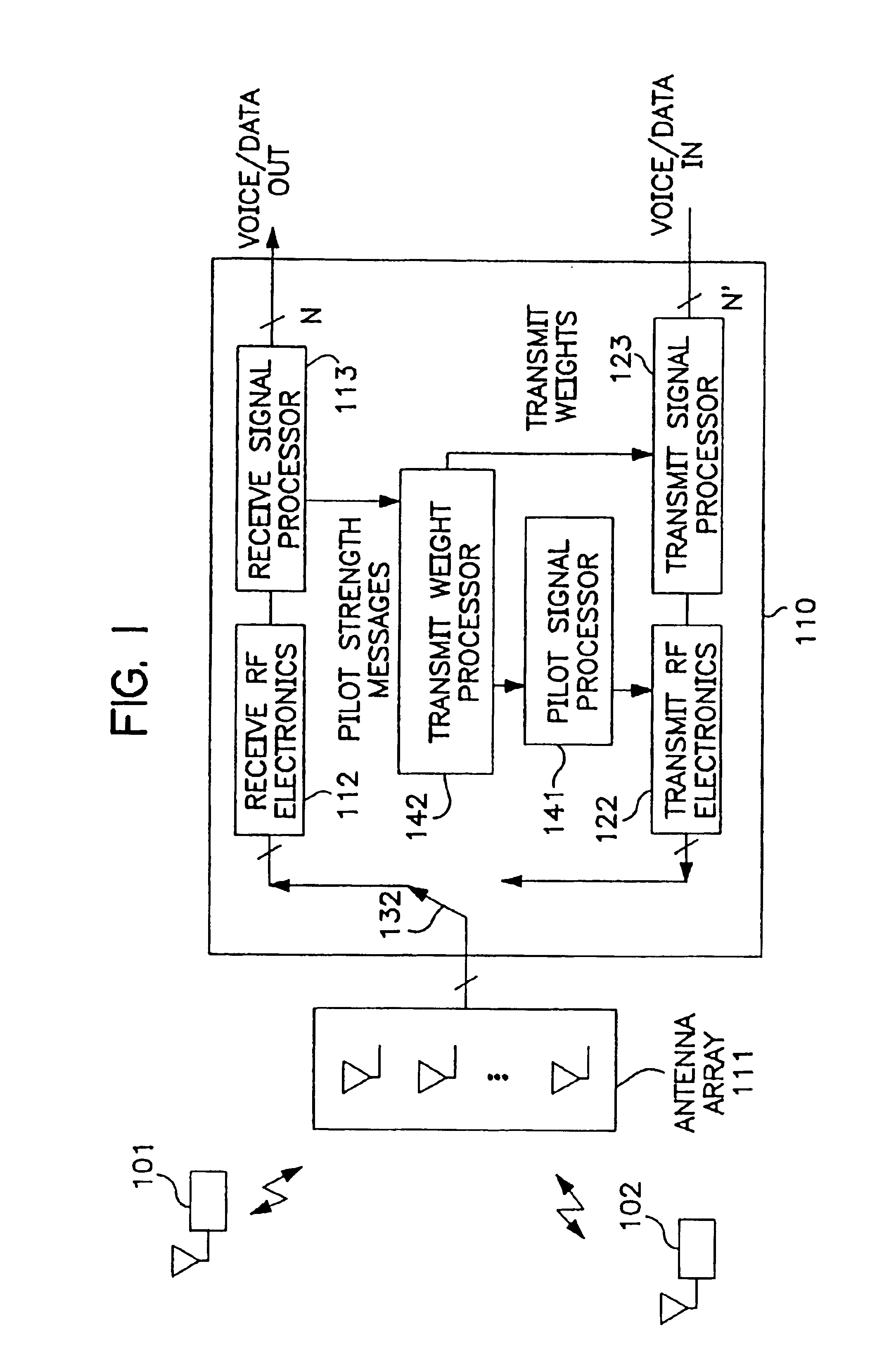Downlink signal processing in CDMA systems utilizing arrays of antennae
- Summary
- Abstract
- Description
- Claims
- Application Information
AI Technical Summary
Benefits of technology
Problems solved by technology
Method used
Image
Examples
Embodiment Construction
[0015]The manner in which the present invention obtains its advantages may be more easily understood with reference to FIG. 1. FIG. 1 is a block diagram of the signal-processing portion 110 of a BS employing an antennae array 111 to communicate with a number of cellular users. Exemplary users are shown at 101 and 102. The signals from the antennae are coupled to RF receiving circuit 112. A “Switch”132 determines whether the antennae are connected to receiving circuit 112 or transmitting circuit 112. RF receiving circuit 112 down converts the RF signal from each antenna in array 111 from the uplink RF frequency and digitizes the base-band signal to provide an in phase and quadrature signal to receive signal processor 113 for each antenna and stores those values in memory. The in phase signal digitized at time t for the ith antenna is denoted by Ii(t), and the quadrature signal by Qi(t) in the following discussion. The base-band signal is typically over sampled to assure that the erro...
PUM
 Login to View More
Login to View More Abstract
Description
Claims
Application Information
 Login to View More
Login to View More - R&D
- Intellectual Property
- Life Sciences
- Materials
- Tech Scout
- Unparalleled Data Quality
- Higher Quality Content
- 60% Fewer Hallucinations
Browse by: Latest US Patents, China's latest patents, Technical Efficacy Thesaurus, Application Domain, Technology Topic, Popular Technical Reports.
© 2025 PatSnap. All rights reserved.Legal|Privacy policy|Modern Slavery Act Transparency Statement|Sitemap|About US| Contact US: help@patsnap.com



